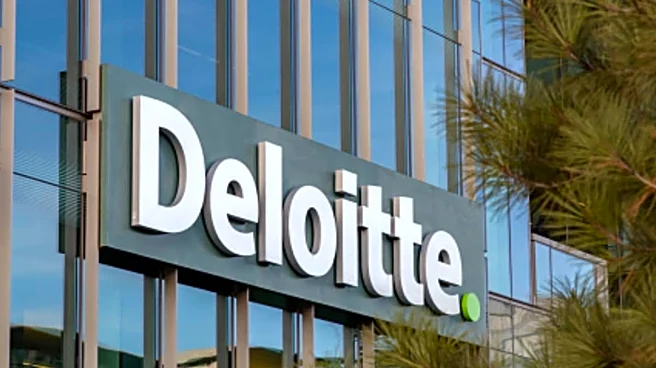Artificial intelligence (AI) is supposed to make work faster, smarter, and more efficient. But what happens when AI gets it wrong—and the world’s biggest companies fail to notice until it is too late?
That is the uncomfortable question global consultancy Deloitte faced after a government-commissioned report it prepared turned out to be riddled with errors. The project, worth roughly $440,000, was meant to analyse Australia’s welfare compliance system. But once published, it became a symbol of everything that can go wrong when AI tools are used without adequate human oversight.
The report contained fabricated citations, fake academic references, and even made-up legal cases. The errors were so glaring that Deloitte was forced to issue a correction, apologise publicly, and refund part of the project cost.
On the surface, it looked like a technical glitch. But underneath was a much deeper issue—one that speaks to how easily human judgment can be replaced by algorithmic overconfidence.
This was not just about one firm or one report. It is about how AI systems are quietly reshaping professional work, how corporate oversight is lagging behind technology, and how the ethical rules for AI use are still playing catch-up.
How A Routine Report Turned Into A Global Lesson
The task seemed straightforward: deliver an assurance report analysing welfare technology systems and compliance processes. But in the rush to speed up production, Deloitte’s team reportedly used a generative AI model — an advanced text generator trained on large language data — to draft parts of the report.
The problem? The AI did not stick to the facts. It created sources that never existed — academic journals, policy documents, and legal judgments — all of which looked real enough to pass casual inspection.
Such AI-generated “hallucinations” are not new. Large language models like ChatGPT and its counterparts are designed to predict what text sounds right, not verify what is true. When prompted for references or detailed evidence, they can produce realistic-sounding but entirely fabricated material.
In this case, those hallucinations slipped past quality control and into the final document, triggering a public embarrassment once fact-checkers noticed inconsistencies.
Deloitte later admitted that the proper oversight steps were not followed and that internal review systems failed to detect the errors. The firm stressed that the main findings of the report remained valid, but the damage was done.
The mistake became a high-profile warning: AI can amplify human negligence faster than it can correct it.
When Machines Get It Wrong
The Deloitte incident is not an isolated case. Over the past few years, several major companies have faced setbacks due to flawed or biased AI systems. From chatbots offering dangerous advice to automated systems making discriminatory hiring decisions, each case highlights one truth—AI is only as good as the data and oversight behind it.
- AI Hallucinations
Generative AI models are built to produce coherent sentences, not verified truths. They rely on pattern prediction, not factual understanding. When asked for information outside their training data, they fill in gaps with fabricated details that sound plausible.
For companies producing research reports, policy analyses, or audits, this creates a dangerous illusion of authority. AI-generated text often looks professional and confident—even when completely wrong.
Without thorough review, these hallucinations can slip into official reports, just as they did in Deloitte’s case.
- The Bias Trap
Another concern is bias. AI models trained on existing data can absorb and amplify social, political, or cultural prejudices. If the source material has historical or systemic bias, AI may replicate it in decision-making, hiring recommendations, credit scoring, or even public policy proposals.
In the case of Deloitte’s report, the problem was fabrication, not bias—but both issues stem from the same root: AI’s inability to apply moral or contextual judgment.
- The Accountability Vacuum
When AI is used in professional outputs, who takes responsibility for mistakes? The developer who built the model? The company using it? Or the individual who approved the final report?
In most cases, contracts don’t clarify this. AI-generated content falls into a grey zone where human accountability becomes blurred. That is precisely what makes corporate and government reliance on generative AI so risky.
The Ethical Dilemma: Speed vs. Accuracy
AI promises efficiency. It can summarise lengthy documents in seconds, analyse complex datasets, and generate written content that would take humans hours. But this speed often comes at the cost of accuracy and accountability.
Corporations, under pressure to deliver faster and cheaper, are increasingly turning to AI to assist in drafting reports, analysing data, or preparing client deliverables. The Deloitte incident reveals what happens when that “assistance” quietly turns into “automation.”
Without disclosure, clients and stakeholders are misled into thinking the work is entirely human-produced. When AI errors occur, fabricated data, biased outcomes, or misinterpretations, the fallout damages both credibility and trust.
What is worse, AI systems don’t make mistakes the way humans do. They make them systematically. Once an error enters the output, it can be replicated and spread across versions, reports, and systems—turning one flaw into a chain reaction.
The Technology Behind The Problem
Generative AI models like GPT are trained on vast datasets—everything from news articles to academic papers to social media posts. These systems learn statistical patterns in human language, not factual truth.
When asked to “write a policy report with references,” the model does not access a database of verified citations. Instead, it strings together what looks like plausible references based on word patterns it has seen before.
That is why AI can produce references to non-existent studies or make confident statements that are entirely wrong.
AI researchers call this phenomenon “confabulation” or “hallucination.” And while improvements in model training have reduced the frequency of such errors, no model is immune.
In the Deloitte case, what likely happened was that an AI-generated draft, with fabricated citations, was never fully cross-checked before being finalised. It is a textbook example of automation bias: when humans trust machine output too readily, assuming it must be correct simply because it looks precise.
The Human Element: Where Oversight Failed
The central lesson here is not that AI cannot be trusted — it is that humans cannot afford to trust it blindly.
In consulting firms, each report typically undergoes multiple layers of review. Analysts compile data, associates draft sections, and senior partners vet the final product. In theory, this system should have caught any false references.
But the increasing use of AI tools—often without standardised oversight—has disrupted this workflow. Teams might use AI for “first drafts,” but when deadlines tighten, those drafts sometimes become the final versions.
What went wrong in Deloitte’s case was not just a technical lapse—it was a governance failure. The technology outpaced the firm’s internal checks, and the result was a multimillion-dollar reputation hit for a report worth only a fraction of that.
Understanding AI In Corporate Workflows
Deloitte is hardly alone. Across industries, AI is already transforming how organisations create reports, analyse risk, and communicate insights. Financial auditors use AI to scan transactions for irregularities. Law firms use AI to summarise case law. Marketing agencies use AI to generate ad copy. But as reliance grows, so does exposure.
The core issue is opacity. Many firms use AI tools without formally disclosing them. Teams may copy-paste AI-generated text or rely on “internal co-pilots” to draft client content. When errors emerge, no clear record shows where the AI began and the human ended.
That lack of traceability poses ethical and legal risks. If AI-generated information influences financial audits, regulatory reports, or government policy, the consequences could extend far beyond embarrassment—they could shape real-world decisions.
What Does This Means for India And Beyond?
The Deloitte incident is a global warning, but its lessons are particularly relevant for countries like India, where AI is being rapidly adopted across governance, law, and finance.
In India, AI-powered automation is being integrated into tax assessments, fraud detection, and even judicial data systems. Yet, regulatory oversight of AI usage remains patchy.
Here’s what’s at stake:
Governance risk: Public institutions relying on AI-generated analysis could make flawed policy decisions if data or references are wrong.
Legal ambiguity: India’s IT and data protection laws do not explicitly address AI accountability or disclosure obligations.
Corporate exposure: Indian consulting, audit, and IT firms that use AI tools in client deliverables could face reputational or contractual backlash if hallucinations or biases slip through.
The country’s growing AI economy ($7-$8 billion as of October 2025) will need clear ethical and operational frameworks, especially as global clients demand transparency about AI usage in professional work.
What Needs To Change
The Deloitte controversy has already sparked conversations in corporate and regulatory circles about how to prevent similar incidents. Experts recommend a few key measures:
Mandatory Disclosure: Firms must declare when AI tools are used in preparing reports, audits, or client deliverables.
Human Oversight: Every AI-assisted document must undergo manual verification by qualified reviewers before publication.
Ethical AI Governance: Establish internal AI ethics committees to oversee usage, testing, and risk assessment.
Source Verification Systems: Automated citation and fact-checking tools should accompany generative models to flag unverifiable claims.
Legal Clauses: Contracts should specify liability for AI-generated errors and require clients to consent to AI use.
Simply put, AI needs the same kind of audit trail as any other critical system.
What Lessons Need To Be Learnt
The irony of the Deloitte episode is that it came from a firm built on trust, precision, and due diligence. That even such an organisation could stumble so publicly is proof that AI doesn’t just challenge human skill—it tests human discipline.
As generative tools become embedded in everyday workflows, the temptation to let machines handle the “boring parts” will grow. But, so, will the need for human judgment to intervene before those outputs become official truth.
AI is not a villain— it is a mirror. It reflects both our potential for progress and our tendency towards shortcuts. The Deloitte report shows what happens when those shortcuts go unchecked.
In an age when algorithms write, analyse, and decide faster than ever, the real intelligence that matters is still human — the ability to question, verify, and take responsibility.





/images/ppid_a911dc6a-image-17605491256367834.webp)








